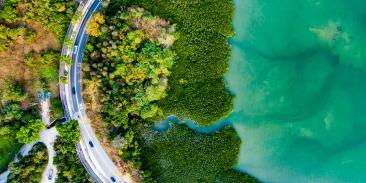Encephalitis Threat Spreads In New York & Into Connecticut
According to epidemiologists, this summer’s weather probably contributed to the deadly outbreak of encephalitis in New York, and now, in Connecticut. The Environmental Defense Fund (EDF) report “Hot Nights in the City: Global Warming, Sea-Level Rise and the New York Metropolitan Region,” released before the outbreak, indicated that a northern shift in outbreaks of St. Louis encephalitis was likely with global warming. This year’s unprecedented outbreak has led to at least three deaths, nine confirmed cases, dozens of cases under investigation, as well as broad spraying of pesticides, according to published news reports.
While a connection between one year’s weather and the long-term global warming trend cannot be established, the EDF report suggests that this summer’s weather and resulting mosquito-borne disease outbreaks could become increasingly common in the future unless greenhouse gas emissions are brought under control. The report is available online at www.edf.org/hotny.
“This year’s encephalitis outbreak is a wake-up call to the citizens of New York and Connecticut,” said Dr. Janine Bloomfield, an EDF senior scientist. “Mosquito-borne disease outbreaks may become much more common unless emissions of polluting greenhouse gases are significantly reduced. Congress and the administration must act to reduce fossil fuel emissions now and safeguard the future for our children and grandchildren.”
“To cope with the disease, widespread pesticide spraying is underway in the region. Such spraying, however, can be damaging to birds and marine life, may lead to the evolution of pesticide-resistant mosquitoes, and may also have implications for human health. Since urban aerial spraying alone cannot eradicate the disease, repeated spraying could be necessary to combat the problem. A long-term, integrated pest management strategy needs to be developed to monitor mosquito populations and reduce the risk of future outbreaks,” said Bloomfield.
To learn more about the suspected human health effects, regulatory coverage, and relative toxicity rankings of Malathion and many other pesticides, go to EDF’s Scorecard web site, www.scorecard.org.
With more than 3 million members, Environmental Defense Fund creates transformational solutions to the most serious environmental problems. To do so, EDF links science, economics, law, and innovative private-sector partnerships to turn solutions into action. edf.org
Latest press releases
-
Groups File Lawsuit Challenging Trump EPA’s Delay of Protections Against Oil and Gas Methane Pollution
July 31, 2025 -
New study shows how sectoral emissions shape today’s warming and tomorrow’s risks
July 30, 2025 -
EPA Administrator Zeldin Delays Commonsense Methane Pollution Protections
July 29, 2025 -
NEW: U.S. Government’s Own Analysis Shows Repealing Tailpipe Pollution Standards Will Sharply Increase Gasoline Prices
July 29, 2025 -
Trump Administration Tries to Eliminate Endangerment Finding, Clean Car and Clean Truck Standards
July 29, 2025 -
Illinois Approves Electric Rate Encouraging Use of Clean Affordable Energy
July 28, 2025










